Welcome! Ready to explore Pyeongchang? Nestled in the towering mountains of South Korea, Pyeongchang is renowned worldwide as the host of the 2018 Winter Olympics. But there’s much more to this serene locale than snow and sports. Whether you’re a winter sports enthusiast, a nature lover, or simply in search of peace, Pyeongchang promises a refreshing escape with its pristine natural beauty and rich cultural heritage. Let’s dive into what makes Pyeongchang a must-visit destination any time of the year.
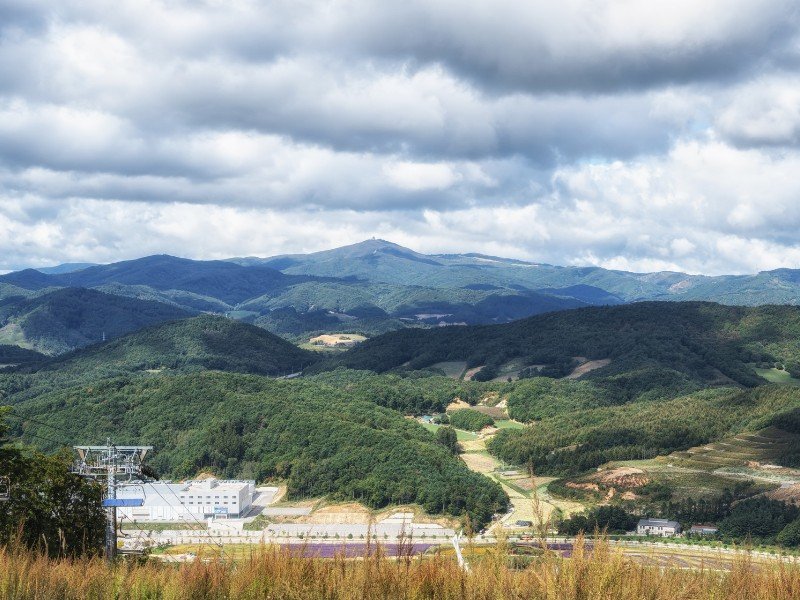
Embrace the Great Outdoors
Mountain Majesty: Pyeongchang is set in the heart of the Taebaek Mountain range, offering stunning vistas and a playground for all sorts of outdoor activities. In the winter, the slopes come alive with skiers and snowboarders, while the warmer months offer excellent hiking, mountain biking, and camping opportunities. The region is home to several well-known resorts that provide all the amenities for a perfect mountain getaway.
Cultural Richness
Deep Roots: Beyond its natural allure, Pyeongchang is steeped in cultural tradition. The area is dotted with ancient temples like Woljeongsa, which offers a unique glimpse into the spiritual heritage of Korea through its serene setting and beautiful architecture. Don’t miss the Odaesan National Park, where you can combine a love for nature with the exploration of historic sites.
Culinary Delights
Flavors of the Mountains: Pyeongchang’s culinary scene reflects its geographical and cultural richness. The region is famous for its clean, fresh flavors, with local specialties including buckwheat dishes like makguksu (buckwheat noodles) and memiljeonbyeong (buckwheat pancakes). Enjoy these hearty meals in local restaurants or traditional Korean guesthouses known as hanok.
Festivals and Events
Celebrating Seasons and Sports: Pyeongchang’s calendar is brimming with festivals and events that celebrate its natural environment and Olympic legacy. The Pyeongchang Trout Festival in winter and the Odaesan Mountain Culture Festival in autumn are highlights, offering visitors a taste of local life and traditional entertainment. The Olympic facilities often host international sporting events, providing a continuous link to the spirit of the 2018 Games.
Pyeongchang is a destination that offers a perfect mix of relaxation, adventure, and cultural exploration. From its snowy peaks to its peaceful temples, and from its rugged trails to its festive streets, every corner of Pyeongchang invites discovery. So, pack your bags and set your sights on this beautiful region, where every season brings new delights and every visit leaves lasting memories.

Pyeongchang City Guide: A Brief History Of Pyeongchang, South Korea
Known globally for its recent Winter Olympics fame, Pyeongchang’s history stretches far beyond its sporting achievements. Let’s peel back the layers of time to uncover the historical treasures of Pyeongchang.
Ancient Beginnings
Roots in Spirituality and Nature: Long before it became a winter sports paradise, Pyeongchang was a spiritual sanctuary. The region is peppered with temples and shrines, dating back to the Silla Kingdom. Woljeongsa Temple, founded in the 10th century, stands as a testament to the deep Buddhist roots that penetrate this mountainous area. The temple’s Nine-Story Octagonal Pagoda is not just a relic; it’s a symbol of the enduring spiritual culture that still resonates today.
Joseon Dynasty and Beyond
Era of Consolidation and Conflict: During the Joseon Dynasty, Pyeongchang played a strategic role due to its location. The rugged terrain provided natural fortifications during times of conflict, while also offering isolation needed for meditative practices. The area was less touched by external influences, which allowed it to preserve its unique cultural practices and dialects. This period solidified Pyeongchang’s identity as a place of both retreat and resistance.
Modern Transformation
Road to the Olympics: The 20th century brought significant changes as South Korea modernized and developed its infrastructure. Pyeongchang’s bid to host the 2018 Winter Olympics was a pivotal moment in its history, transforming it from a quiet mountain town to an international sports destination. The development included world-class facilities and a new high-speed train that connected Pyeongchang to Seoul, opening up its pristine beauty to the world.
Cultural Renaissance
Preserving Heritage in a Modern World: Despite its development, Pyeongchang has managed to preserve its cultural heritage. The region’s traditional music, dance, and crafts are celebrated through various festivals, like the Pyeongchang Moonlight Festival and the Odaesan Mountain Culture Festival. These events not only attract tourists but also foster a sense of pride among locals for their cultural heritage.
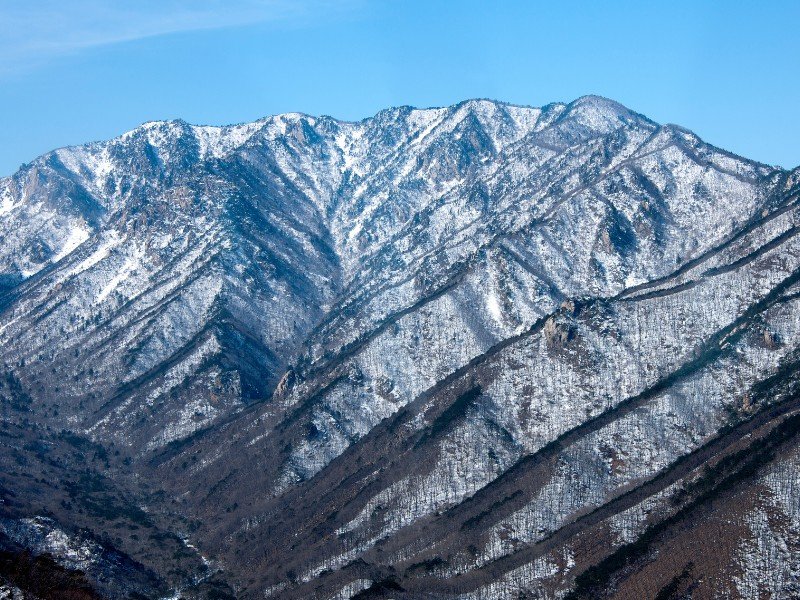
Pyeongchang Top Attractions and Best Places to Visit in South Korea
Up until recently, it was common for foreigners to confuse Pyeongchang for Pyongyang. Home to the 2018 Winter Olympics, this resort town couldn’t be more different from the capital of North Korea.
Most of the world knows this place for being a hotbed of winter sports, and it does deliver. However, it is a solid all-season destination. It is close by to a national park that is a joy to hike through in the summer. It is home to tranquil farms that are popular with film directors. And yes, there is a historically significant temple in the area.
No matter the time of year, a trip to Pyeongchang will be a memorable one.
Worthwhile Attractions
Finding many cultural attractions in Pyeongchang can be hard. However, Woljeongsa Temple is a notable exception to that rule. Nestled in a forested valley, Monk Ja Jang constructed this Buddhist hall of worship in the 7th century.
It has a nine-storey pagoda, a museum boasting Goryeo Dynasty artifacts, as well as a Sitting Buddha statue. However, its biggest claim to fame is the fact that it is home to relics of the Buddha. Scholars say the abbot buried his bones within a hermitage on temple grounds. Even if you are skeptical, this old structure and its stunning natural surrounds make this attraction a must see.
The Pyeongchang area is a rare oasis of nature in a heavily-urbanized country. Experience the best of this wilderness by spending time exploring Odaesan National Park. This nature reserve protects thick forests that cover five peaks – Dongdaesan, Durobong, Horyeongbong, Sangwangbong, and Birobong.
As you walk through stands of yew trees and royal azalea, watch for musk deer and boars. Do take pictures if you encounter them, but keep your distance – their habitat is super limited in modern times.
More Attractions
Most visit Odaesan National Park as a day trip, but if you prefer, there are places where you can camp. Leave your site the way you found it – it will preserve the park and help others enjoy as well.
If you are into sports, you’re likely aware that Pyeongchang was the host of the 2018 Winter Olympics. Ride the runs that the world’s best athletes raced upon by paying a visit to Phoenix Snow Park. Of its seventeen runs, the FIS (Federation International de Ski) recognizes four as being suitable for competitions.
Even when you aren’t trying to channel Lindsay Vonn, this winter sports centre offers plenty to do. The base boasts a sauna, bowling alley, arcade, billiards hall, a karaoke bar, and other diversions. Accommodations are also available, with a luxury hotel and a condotel located on site.
Are you visiting the Pyeongchang area during late December or January? Celebrate winter with locals by checking out the Pyeongchang Trout Festival. As the name implies, ice fishing is the main draw, but this festival offers more than that.
This party also offers traditional folk games, sledding, ice skating, and sleigh rides. When those in your party catch fish, they can have on-site cooks prepare it, making for a fresh dinner.
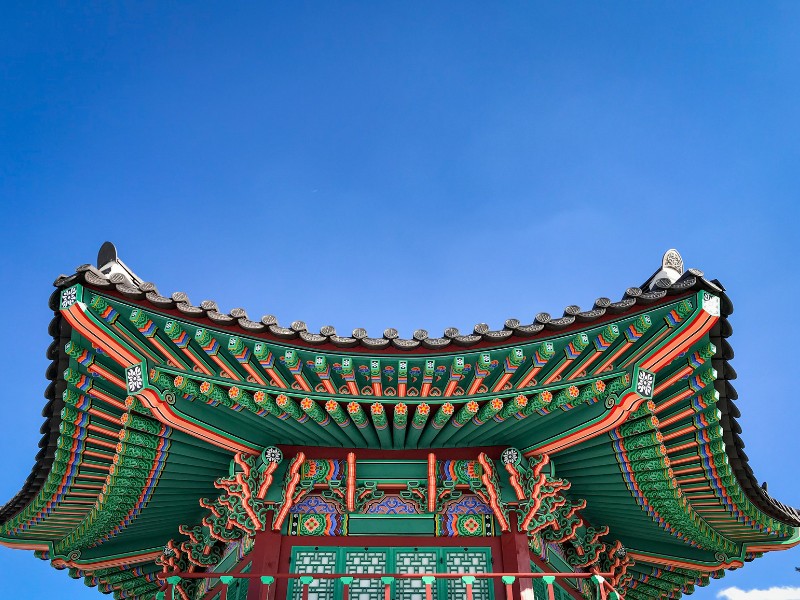
Other Cultural Attractions: Trip to Pyeongchang, South Korea
South Korea is a mountainous country, with 70% of its land area taken up by elevated terrain. Most highlands are too steep for agriculture, but in Pyeongchang, plateaus have made farms like Samyang Ranch viable.
Their crisp, fresh air creates a perfect climate for grazing livestock. These pastures and its trademark milk cows has made this place a favoured shooting location for Korean dramas. These include Lover’s Concerto, Taegukgi: The Brotherhood of War, When Romance Meets Destiny, and many others.
Herbnara Farm is another agricultural attraction that is well worth a visit on a trip to Pyeongchang. Situated in the Hongjeong Valley, this farm is popular among visitors in all seasons. In particular, people come in spring for its flowering royal azaleas, and in autumn for its outstanding foliage.
Other Attractions
Summer is also a favoured time to visit, as this farm’s high elevation makes it noticeably cooler than Seoul. While here, check out more than 100 different herbs, a garden with fragrant plants, and their herbal tea cafe.
When you get back in town, be sure to check out the Pyeongchang Olympic Market. A traditional food market re-named to attract tourists during the Winter Games, be sure to come here with an appetite. You can find Korean favourites here with ease, but do keep your eyes open for local specialities.
These include buckwheat pancakes, tadpole noodles (made from corn flour), and sundae (Korean-style sausage). Let your nose guide you – believe us, you won’t be disappointed!
The bone-penetrating cold of a Pyeongchang winter can wear out even the hardiest traveller. Recover by spending a day enjoying Ocean 700. This indoor water park boasts waterslides, a wave pool, and more, making it ideal for travelling families.
source: 감성여행,쉼 on YouTube
Top 20 Things To Do in Pyeongchang, Korea For Visitors
Here are the top 20 things to do in Pyeongchang:
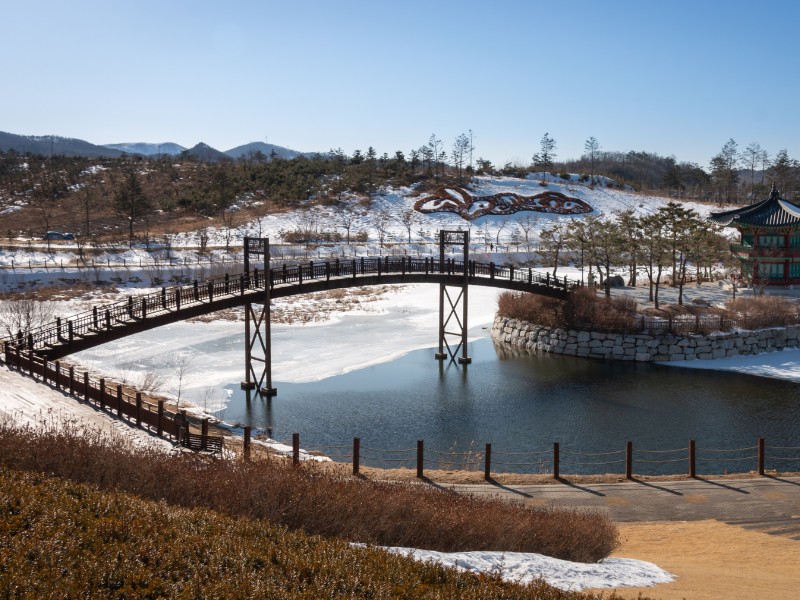
1. Skiing and Snowboarding at Alpensia Resort
Hit the slopes at Alpensia Resort, a centerpiece of the 2018 Winter Olympics. With trails suited for beginners to seasoned pros, it’s a winter sports haven. The resort also boasts a ski jump tower offering breathtaking views of the surrounding mountains. Whether you’re carving down the mountain or just enjoying the snowy scenery, Alpensia has it all.
- World-class facilities: Experience top-notch ski and snowboard runs.
- Stunning vistas: Take in panoramic mountain views from the ski jump tower.
- All skill levels: Slopes designed for both novices and experts.
2. Visit Woljeongsa Temple
Step into serenity at Woljeongsa Temple, nestled within Odaesan National Park. This thousand-year-old Buddhist temple is surrounded by dense forests and features ancient pagodas and traditional architecture. Don’t miss the Dharma Hall, adorned with intricate wood carvings that exude a calming atmosphere. It’s a spiritual retreat that soothes the soul.
- Historic charm: Explore a temple with over a millennium of history.
- Natural beauty: Enjoy the peaceful forest setting.
- Cultural insights: Discover Buddhist artifacts in the on-site museum.
3. Hike in Odaesan National Park
Embrace the great outdoors in Odaesan National Park, renowned for its lush forests and clear streams. With trails ranging from easy walks to challenging treks, there’s something for every hiker. Autumn transforms the park into a canvas of vibrant reds and oranges. Along the way, explore ancient temples and soak up stunning countryside views.
- Diverse trails: Choose from a variety of hiking paths.
- Seasonal splendor: Experience breathtaking fall foliage.
- Wildlife spotting: Keep an eye out for local flora and fauna.
4. Relax at Phoenix Snow Park
Unwind at Phoenix Snow Park, another Olympic venue known for excellent ski slopes and snowboard runs. Beyond winter sports, enjoy year-round activities like a water park, golf course, and zip-lining. Hop on the gondola for panoramic views of the Taebaek Mountains. It’s an adventure playground for families and thrill-seekers alike.
- Winter fun: Ski and snowboard on Olympic-standard slopes.
- Summer activities: Try zip-lining or splash around in the water park.
- Scenic rides: Take the gondola for breathtaking mountain vistas.
5. Experience Traditional Korean Life at Daegwallyeong Sheep Farm
Visit Daegwallyeong Sheep Farm to experience rural Korean life amidst picturesque landscapes. Stroll through rolling hills dotted with grazing sheep, reminiscent of the European countryside. Feed the fluffy residents and wander along trails offering spectacular mountain views. It’s especially charming in spring and summer when the fields are lush and green.
- Interactive fun: Feed and pet friendly sheep.
- Scenic walks: Enjoy leisurely hikes with stunning backdrops.
- Peaceful ambiance: Relax in a serene pastoral setting.
6. Explore the Pyeongchang Trout Festival
Join in the festivities at the Pyeongchang Trout Festival, an annual winter event filled with excitement. Try your hand at ice fishing and have your catch prepared fresh at nearby restaurants. Enjoy sledding, snow tubing, and other snowy activities. It’s a fun-filled experience that showcases Korean winter culture.
- Ice fishing: Catch trout through holes drilled in the ice.
- Winter activities: Slide down slopes on sleds and tubes.
- Culinary delight: Taste freshly caught and cooked trout.
7. Visit Jeonggangwon – Korean Traditional Food Culture Experience Center
Immerse yourself in Korean cuisine at Jeonggangwon. Participate in cooking classes to make dishes like kimchi and bulgogi. Learn about the importance of food in Korean culture while surrounded by beautiful natural scenery. It’s a must-visit for food enthusiasts and culture buffs.
- Hands-on cooking: Create traditional Korean meals from scratch.
- Cultural education: Understand the history behind each dish.
- Scenic setting: Enjoy the tranquil environment as you cook.
8. Take a Leisurely Walk Around Yongpyong Resort’s Green Season
Discover the “Korean Alps” at Yongpyong Resort during its lush green season. Hike through verdant trails, play a round of golf, or ride the gondola for panoramic mountain views. It’s a refreshing escape with clean air and beautiful landscapes. Don’t miss the music and cultural festivals hosted in the summer months.
- Outdoor activities: Hike, golf, or simply relax in nature.
- Stunning views: Gondola rides offer breathtaking sights.
- Festive atmosphere: Enjoy summer events and festivals.
9. Enjoy the Views from Pyeongchang Olympic Ski Jump Tower
Feel the thrill at the Pyeongchang Olympic Ski Jump Tower. Stand where Olympians launched into the air and take in panoramic views of the region. An observation deck provides stunning photo opportunities. Explore exhibits detailing the history of the Winter Olympics and the athletes who competed.
- Olympic legacy: Visit a landmark from the 2018 Winter Games.
- Breathtaking panoramas: Capture sweeping views of Pyeongchang.
- Educational exhibits: Learn about the sport and its champions.
10. Indulge in Pyeongchang’s Hanwoo Beef
Treat your taste buds to Pyeongchang’s renowned Hanwoo beef. Known for its tenderness and rich flavor, it’s a must-try for meat lovers. Enjoy it in various forms, from sizzling barbecues to hearty stews. This culinary experience highlights the region’s agricultural excellence.
- Gourmet delight: Savor premium, locally raised beef.
- Variety of dishes: Try Hanwoo in different traditional recipes.
- Cultural taste: Experience a staple of Korean cuisine.
11. Unwind at a Traditional Korean Spa
After a day of adventure, relax at a traditional Korean spa, or jjimjilbang. Indulge in saunas, hot baths, and rejuvenating treatments. It’s a perfect way to experience Korean wellness culture and recharge. Many spas offer overnight stays, adding a unique touch to your trip.
- Soothing relaxation: Ease your muscles in hot baths.
- Wellness treatments: Enjoy massages and skin therapies.
- Cultural immersion: Experience a staple of Korean leisure.
12. Discover the Beauty of Heungjeong Valley
Escape to Heungjeong Valley, known for its clear waters and lush forests. Ideal for picnics, photography, and peaceful walks. The untouched natural environment offers tranquility away from the hustle and bustle. Nearby natural hot springs add to the area’s allure.
- Nature’s tranquility: Immerse yourself in serene surroundings.
- Scenic trails: Wander along picturesque paths.
- Hot springs: Relax in natural thermal waters.
13. Visit the Lee Hyo-seok Culture Village
Celebrate Korean literature at the Lee Hyo-seok Culture Village. Explore the birthplace of the famous writer and learn about his contributions. The village hosts an annual festival with workshops, exhibits, and performances. Stroll through buckwheat fields that inspired his beloved story “When Buckwheat Flowers Bloom.”
- Literary homage: Dive into the life of a celebrated author.
- Cultural festivities: Participate in the vibrant annual festival.
- Scenic beauty: Walk through enchanting buckwheat fields.
14. Adventure at Alpensia Sports Park
Get active at Alpensia Sports Park, offering mountain biking, archery, and horse riding. As an Olympic venue, it provides top-notch facilities for a variety of sports. Perfect for families and enthusiasts seeking fun and excitement. The park also features a golf course and leisure complex.
- Diverse activities: Engage in multiple outdoor sports.
- Olympic experience: Enjoy facilities used by world-class athletes.
- Family-friendly: Fun for visitors of all ages.
15. Sample Local Delicacies at Pyeongchang Market
Indulge in authentic flavors at Pyeongchang Market, a traditional Korean marketplace. Sample street foods and regional specialties amidst bustling stalls. It’s an excellent place to immerse yourself in local life. Shop for unique crafts and souvenirs to remember your trip.
- Culinary exploration: Taste a variety of local dishes.
- Authentic atmosphere: Experience everyday Korean market life.
- Shopping finds: Purchase handmade crafts and gifts.
16. Explore Samyang Ranch
Visit Samyang Ranch, Asia’s largest highland farm, offering breathtaking mountain and countryside views. Take guided tours, meet farm animals, and relish the expansive landscapes. The ranch shines in summer’s greenery and autumn’s colorful foliage. Ideal for families and nature enthusiasts.
- Spectacular scenery: Enjoy panoramic vistas of rolling hills.
- Animal encounters: Interact with cows, sheep, and more.
- Seasonal beauty: Experience vibrant colors throughout the year.
17. Enjoy the Festivities at the Pyeongchang Donggang Festival
Celebrate at the Pyeongchang Donggang Festival, highlighting the Donggang River’s cultural and natural significance. Participate in rafting, fishing competitions, and enjoy cultural performances. It’s an excellent opportunity for outdoor fun and embracing local traditions. The festival promotes environmental conservation and regional pride.
- Water adventures: Raft down the scenic Donggang River.
- Cultural events: Watch traditional performances and ceremonies.
- Community spirit: Engage with locals and learn about conservation.
18. Stargazing at Pyeongchang Astronomical Observatory
Gaze into the cosmos at the Pyeongchang Astronomical Observatory. Located at a high altitude, it offers clear views of the night sky. Use telescopes to observe stars, planets, and celestial wonders. Educational programs deepen your astronomical knowledge.
- Celestial sights: Observe the universe like never before.
- Interactive learning: Participate in astronomy workshops.
- Nighttime magic: Experience the tranquility of the night sky.
19. Winter Sports at the Pyeongchang Biathlon Centre
Test your skills at the Pyeongchang Biathlon Centre, an Olympic venue combining cross-country skiing and rifle shooting. Training programs make it accessible for beginners. It’s a unique sport blending physical endurance and precision. Watch national and international competitions if you’re lucky.
- Try biathlon: Experience this challenging winter sport.
- Professional guidance: Learn from experienced instructors.
- Spectator opportunities: Attend thrilling biathlon events.
20. Trek the Baekdudaegan Mountain Range
Embark on an epic hike along the Baekdudaegan Mountain Range, considered Korea’s backbone. Explore diverse ecosystems, historic sites, and breathtaking scenery. Visit ancient temples nestled in the mountains. It’s an adventure showcasing the majesty of Korea’s natural landscapes.
- Challenging hikes: Tackle trails for various skill levels.
- Historic exploration: Discover temples and cultural landmarks.
- Natural wonders: Immerse yourself in Korea’s pristine wilderness.
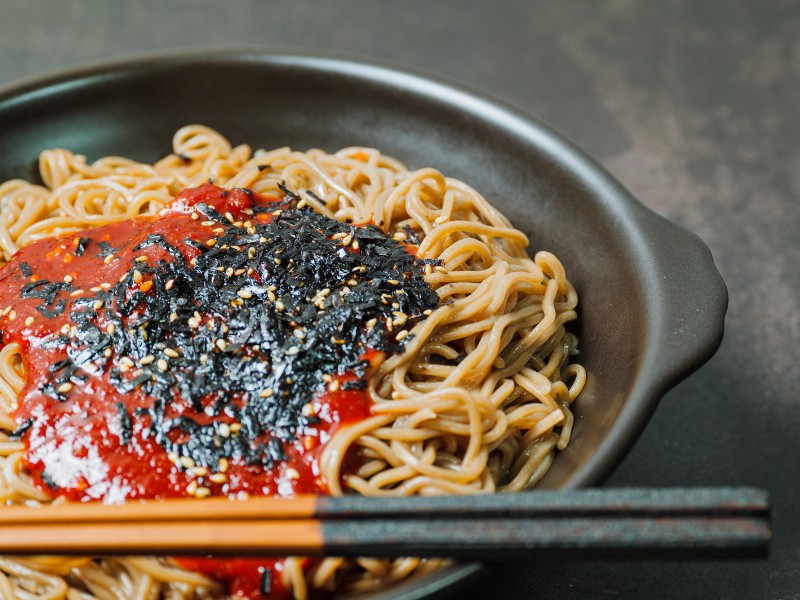
What To Eat and Drink at Restaurants in Pyeongchang, South Korea
Whether you’re fueling up for a day on the slopes or warming up after, here’s a guide to what to eat and drink in Pyeongchang.
Traditional Dishes
1. Buckwheat Noodles (Makguksu) Pyeongchang’s cool climate is ideal for cultivating buckwheat, which is why makguksu, a cold buckwheat noodle dish, is a local specialty. These noodles are served with a tangy chilled broth, mixed with julienned vegetables, a hard-boiled egg, and a sprinkle of sesame seeds. It’s perfect for refreshing yourself on a warm day.
2. Korean BBQ (Hanwoo Beef) While not unique to Pyeongchang, the region’s Korean BBQ uses locally raised Hanwoo beef, which is highly prized throughout the country for its marbling and flavor. Enjoy this premium meat grilled right at your table, served with an array of side dishes including kimchi, lettuce wraps, and a variety of savory pastes.
3. Corn Dishes Pyeongchang’s mountains are dotted with cornfields, making corn a staple ingredient. Corn is used in a variety of dishes from steamed corn on the cob to corn pancakes, which are both sweet and savory treats enjoyed by locals and visitors alike.
4. Soybean Paste Stew (Doenjang Jjigae) This hearty stew is a staple in Korean cuisine and is made with a rich, fermented soybean paste (doenjang), vegetables, tofu, and often seafood or meat. In Pyeongchang, it’s cooked with fresh local ingredients, providing a comforting, home-cooked feel with every spoonful.
Local Beverages
5. Rice Wine (Makgeolli) Makgeolli is a traditional Korean rice wine that’s both sweet and slightly tangy, with a milky, off-white appearance. It’s typically enjoyed alongside Korean pancakes (jeon) and is a favorite in the cooler mountain climate, known for warming the body and soul.
6. Green Tea The surrounding regions, particularly the nearby town of Gangneung, are known for their high-quality green tea. Visit a local tea house in Pyeongchang to experience a traditional Korean tea ceremony. The tea is not only warming but also offers a glimpse into the ceremonial aspects of Korean culture.
Street Food and Snacks
7. Hotteok This sweet Korean pancake is filled with brown sugar, nuts, and cinnamon, and is a popular street food throughout Korea, including Pyeongchang. It’s especially popular in winter during the ski season when a hot, sweet snack is most appreciated.
**8. Grilled Fish (Sanjeok) Often found at local markets, sanjeok consists of skewered and grilled fish, which is a common sight in Pyeongchang. This simple, delicious snack reflects the region’s practice of utilizing fresh river and sea fish, providing a smoky and hearty street food option.
Fine Dining
9. Fusion Cuisine As a popular tourist destination, Pyeongchang offers a range of fine dining options that incorporate traditional Korean ingredients into modern, innovative dishes. These restaurants often feature panoramic views of the mountains, making for a dining experience that’s as visually stunning as it is delicious.
10. Local Ginseng Chicken Soup (Samgyetang) Ginseng is widely cultivated in the surrounding areas and is a key ingredient in samgyetang, a ginseng chicken soup that is believed to have restorative properties. This nourishing soup typically includes a whole young chicken stuffed with rice, garlic, and jujube, making it a must-try for its health benefits and comforting flavors.
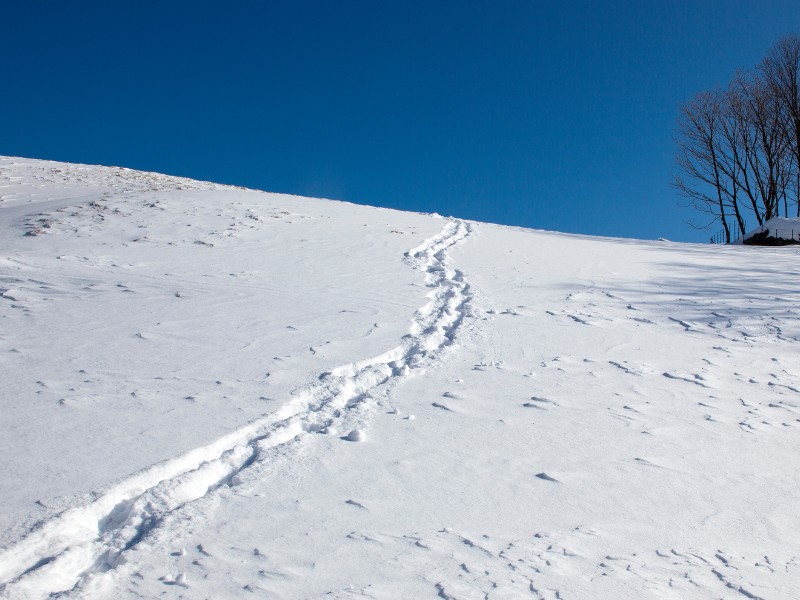
Tours For Visitors To Pyeongchang, Korea
Here’s a detailed travel guide to some of the best tours available in Pyeongchang, catering to a variety of interests.
1. Olympic Legacy Tours
Relive the thrill of the 2018 Winter Olympics with a tour of the Olympic facilities. Visit the Alpensia Ski Resort, the main hub of the Olympics, where you can see the ski jump tower and the biathlon center. These tours often include VR experiences that let you feel like an Olympian competing in various winter sports.
2. Ski and Snowboard Packages
Take advantage of Pyeongchang’s world-class slopes with a ski or snowboard tour package. Whether you are a beginner or an expert, there are lessons and equipment rentals available, along with lift passes. Enjoy the well-groomed trails of Yongpyong or Phoenix Park and unwind afterwards with some hot cocoa by the fire.
3. Temple Stay Experience
For a truly serene and introspective experience, participate in a temple stay at Woljeongsa Temple. These tours allow you to live like a monk for a day (or more), participating in meditation, tea ceremonies, and monastic meals. It’s a unique opportunity to disconnect from the hustle and bustle of everyday life and find peace in the mountains.
4. Hiking and Nature Tours
Explore the natural beauty of Pyeongchang with a guided hiking tour through the region’s lush landscapes. Popular routes include Odaesan National Park, which is home to ancient forests and stunning mountain vistas. These tours can be tailored to all fitness levels and often include foraging for wild herbs and learning about the local ecology.
5. Cultural and Historical Tours
Dive deep into the cultural heritage of Pyeongchang with a tour that visits historic sites and local villages. Learn about traditional Korean crafts at the Lee Hyo-Seok Culture Village, see historic homes and try making traditional Korean food. These tours provide insight into the rich history and traditions of the Korean people.
6. Food and Brewery Tours
Experience the flavors of Pyeongchang with a culinary tour, featuring visits to local farms, markets, and breweries. Sample traditional dishes such as buckwheat noodles and Korean BBQ, and learn about the brewing process at a local craft brewery. These tours are great for foodies looking to explore Korean cuisine beyond the typical restaurant setting.
7. Adventure Sports Tours
For the thrill-seekers, Pyeongchang offers paragliding, ATV, and mountain biking tours. Experience the adrenaline rush of soaring over the mountains, racing through rugged terrain, or biking down steep trails. These tours provide all the necessary equipment and safety briefings, ensuring a thrilling yet safe adventure.
8. Wellness and Spa Tours
After a day of activities, unwind with a wellness and spa tour. Many resorts in Pyeongchang offer packages that include spa treatments, hot spring visits, and yoga sessions. These tours are perfect for couples looking for a relaxing retreat or anyone needing a break from the cold.
9. Photography Tours
Capture the stunning landscapes of Pyeongchang with a photography tour led by professional photographers. These tours take you to the best spots for capturing the natural beauty of the area, from sunrise at a mountain peak to the serene beauty of a Buddhist temple surrounded by autumn leaves.
10. Seasonal Festival Tours
Participate in local festivals through organized tours that offer a comprehensive experience of events such as the Pyeongchang Trout Festival or the Odaesan Mountain Culture Festival. These tours include transportation, entry fees, and a guide who can provide background and context to enhance your festival experience.

Day Trips From Pyeongchang, South Korea
Here are ten excellent day trips from Pyeongchang, each providing a unique way to expand your adventures in South Korea.
1. Gangneung
Just a short drive from Pyeongchang, Gangneung is a coastal city famous for its beautiful beaches and the annual Dano Festival. Visit Jeongdongjin to see one of the world’s closest train stations to the sea, or explore the Gyeongpo Lake area for a serene walk. Coffee lovers shouldn’t miss the charming Anmok Coffee Street, where they can sip freshly brewed coffee while gazing out over the ocean. Gangneung also offers a peek into Korean history at the Ojukheon House, where the famous scholar Yi I was born.
2. Seoraksan National Park
Experience the majestic beauty of Seoraksan National Park, known for its breathtaking scenery and diverse flora and fauna. Hiking enthusiasts can tackle the numerous trails that cater to all skill levels, including the challenging ascent to Daecheongbong Peak. For those looking for a more relaxing visit, the cable car offers a scenic ride up to Gwongeumseong Fortress, providing stunning panoramic views of the park. Autumn is particularly spectacular, when the mountain slopes are ablaze with vibrant fall colors.
3. Jeongseon Alpine Village
A trip to Jeongseon Alpine Village provides a mix of traditional culture and outdoor activities. This area is known for its market, Jeongseon Arirang Market, where visitors can try local specialties like Jeongseon herb duck. The village is also a starting point for the rail bike experience that takes you through beautiful rural landscapes along old train tracks. Additionally, the village hosts regular performances of the Jeongseon Arirang, a UNESCO-recognized folk song integral to Korean cultural heritage.
4. Wonju
Explore Wonju, a city with a rich history and cultural significance, particularly noted for its role in the development of Korean printing during the Joseon Dynasty. Visit the Hanji Theme Park to learn about traditional Korean paper making, or explore the historic sites like the Wonju Hanji Festival held annually. For outdoor activities, the Chiaksan National Park offers excellent hiking trails and stunning views. The city’s vibrant art scene can be seen at the Wonju Dynamic Dancing Carnival, which fills the streets with music and dance each fall.
5. Chuncheon
Famous for its lakeside scenery and the iconic Nami Island, Chuncheon offers a picturesque retreat from Pyeongchang. Take a ferry to Nami Island, where you can wander among its tree-lined paths, visit cultural exhibitions, and enjoy its peaceful ambiance. Back in Chuncheon, sample the local dish, dakgalbi (spicy stir-fried chicken), at one of the many restaurants dedicated to this regional specialty. Outdoor enthusiasts will enjoy a visit to Gangchon, where cycling and rail biking along old railroad tracks make for a fun day out.
6. Sokcho
Sokcho, located to the northeast of Pyeongchang, is a great destination for seafood lovers and beach-goers. Explore the bustling Sokcho Fish Market, where fresh seafood can be sampled straight from the ocean. Enjoy a day of relaxation or water sports at Sokcho Beach, or take a hike in Seoraksan National Park, which is also accessible from this side. Don’t miss the chance to visit the Sinheungsa Temple, an ancient site with a massive bronze Buddha that overlooks the park.
7. Yongpyong Resort
Just a short drive from Pyeongchang, Yongpyong Resort offers a variety of seasonal sports activities. In winter, it’s a skiing paradise, while in summer, golfing and hiking take precedence. The resort also played a role as a filming location for the popular Korean drama “Winter Sonata,” attracting fans from across Asia. For a more relaxed experience, take the gondola ride up to Dragon Peak to soak in the spectacular views of the surrounding mountains.
8. Hwacheon
Hwacheon is an ideal spot for those interested in fishing and natural beauty. Each winter, the Hwacheon Sancheoneo Ice Festival draws visitors for ice fishing, sledding, and other snow activities. In warmer months, the clear waters of the Hwacheon Stream are perfect for fly fishing. The area is also home to the Peace Dam, built as a countermeasure to potential floods from North Korea.
9. Danyang
Head to Danyang for an adventure-filled day exploring caves and cliffs along the Namhangang River. The area is famous for its eight scenic views, which include the breathtaking Dodamsambong Peaks and the mysterious Gosu Cave. Paragliding over Danyang’s dramatic landscape offers a thrilling perspective of its natural beauty. The region is also known for its healing mineral springs, ideal for a rejuvenating stop.
10. Andong
Experience the rich heritage of Andong, the heartland of traditional Korean culture. Visit the Andong Hahoe Folk Village, a UNESCO World Heritage site, where you can see traditional Joseon Dynasty houses and learn about ancient Korean daily life. Enjoy the local delicacy, Andong jjimdak, and don’t miss the annual Andong Mask Dance Festival, which showcases unique cultural performances. Andong also offers serene landscapes along the Nakdong River, perfect for peaceful walks or bike rides.
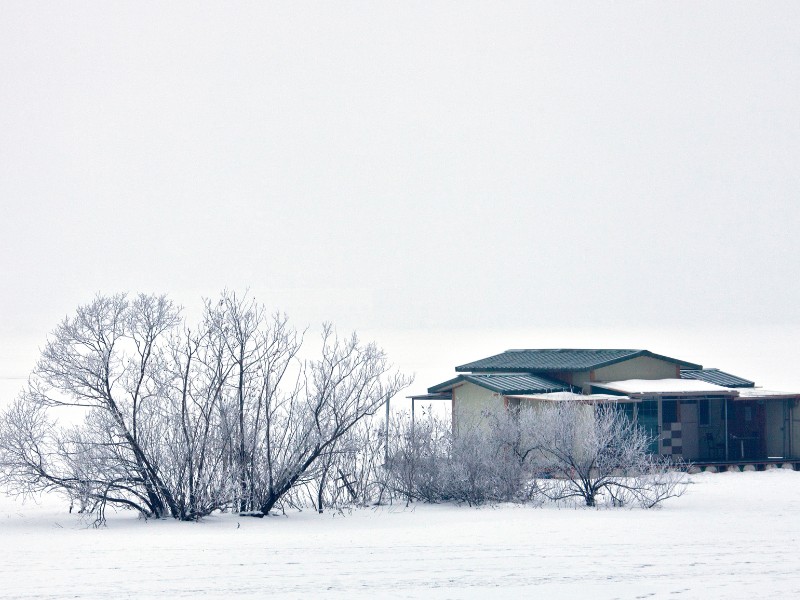
Pyeongchang Transportation Guide
Here’s a mini travel guide on the best ways to navigate Pyeongchang and its surrounding areas.
Getting to Pyeongchang
1. By Air The nearest major airports to Pyeongchang are Incheon International Airport (ICN) and Gimpo International Airport (GMP), both located near Seoul. From these airports, travelers can take direct buses, trains, or rent a car to reach Pyeongchang, which is approximately 2.5 to 3 hours away by road.
2. By Train Korea’s efficient KTX (Korea Train Express) services connect Seoul to Jinbu (Odaesan) station in Pyeongchang. The high-speed train reduces travel time significantly, making it a popular choice for getting to the region quickly and comfortably. From Jinbu station, local taxis and buses are available to take you to various points within Pyeongchang.
3. By Bus Direct intercity buses run from Seoul’s Express Bus Terminal and Dong Seoul Bus Terminal to Pyeongchang and its towns like Hoenggye. These buses are frequent, affordable, and convenient, providing a direct link to the area without the need for transfers.
Getting Around Pyeongchang
4. Rental Cars Renting a car is one of the most convenient ways to explore Pyeongchang, especially if you plan to visit multiple sites scattered throughout the region. Car rental agencies are available at the airports and major train stations. Driving in Pyeongchang offers the flexibility to explore at your own pace and access more remote areas easily.
5. Local Buses The local bus network in Pyeongchang is extensive, connecting major tourist spots, ski resorts, and residential areas. It’s an economical way to travel, though buses might not be as frequent as in larger cities. Timetables and route maps are available at bus stations and tourist information centers.
6. Taxis Taxis are readily available throughout Pyeongchang and can be hailed on the street, booked via phone, or through taxi-hailing apps. They offer a quick and flexible way to move around, especially for shorter distances or when public transport schedules are limited.
Specialized Transportation Services
7. Shuttle Services Many of the larger ski resorts and hotels in Pyeongchang offer shuttle services for guests. These shuttles typically connect to major transportation hubs like train stations and nearby cities, providing an easy and stress-free way to start and end your visit.
8. Cycling Pyeongchang’s scenic roads and trails make it an excellent place for cycling. Bike rental shops are available, particularly around tourist areas and resorts. Cycling is a great way to enjoy the natural beauty of the region at a leisurely pace.
Accessibility Options
9. Accessible Transportation For those requiring accessible transportation options, it’s best to check with service providers directly. Most buses and trains are equipped with facilities to assist passengers with disabilities, and many resorts offer specialized services to ensure all travelers can enjoy their visit without hassle.
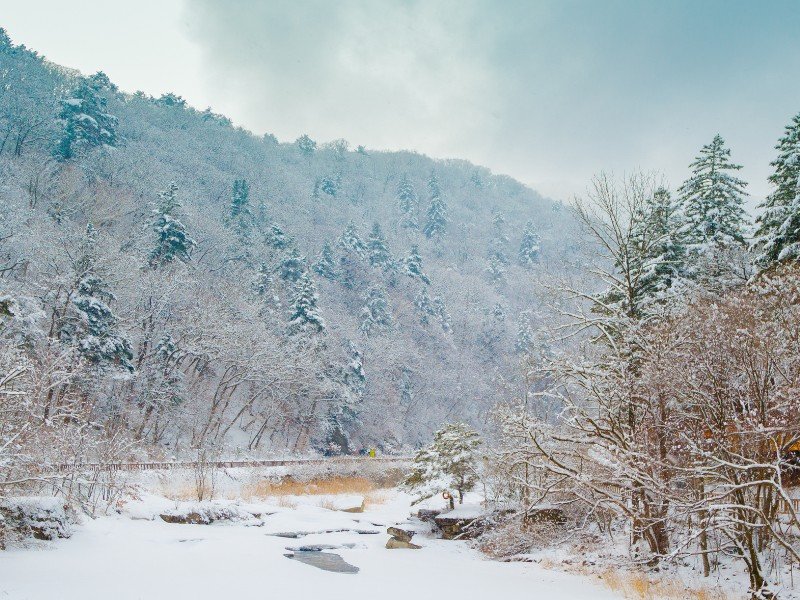
Pyeongchang Travel Guide: Final Thoughts
From serene temple stays to adrenaline-fueled outdoor sports, Pyeongchang is a destination that caters to all. Whether you came for the winter games or the summer trails, this Korean gem provides a backdrop that turns any holiday into a tapestry of unforgettable memories.
A Year-Round Destination
Every Season Offers a New Reason: Pyeongchang’s charm is not confined to the winter. Each season brings its unique flavor and opportunities. Spring blooms with wildflowers and verdant landscapes, summer offers lush hiking trails and vibrant festivals, and autumn paints the mountains in fiery hues. Every visit promises different experiences, making Pyeongchang a great destination to return to throughout the year.
Cultural Immersion
Deep Dive into Korean Culture: Beyond its natural beauty, Pyeongchang is a hotspot for cultural enthusiasts. Engaging in a temple stay, exploring traditional markets, or attending a local music festival can enrich your understanding of Korea’s rich heritage. The region’s food, art, and history are as integral to the travel experience as its scenic views.
Culinary Delights
Flavors to Savor: Don’t leave without indulging in the local cuisine. Pyeongchang’s unique dishes, like buckwheat noodles and grilled Hanwoo beef, offer a taste of the region’s culinary excellence. Local soju and makgeolli serve as perfect complements to any meal, warming you up during the cold days or winding you down in the evening.
Adventure Awaits
Thrills for All Ages: Whether you’re soaring down a ski run, biking a mountain trail, or fishing in a clear stream, Pyeongchang is an adventurer’s paradise. The region’s well-maintained facilities cater to sports enthusiasts of all levels and interests, ensuring that everyone from beginners to experts finds excitement and challenge.
Lasting Memories
Unforgettable Experiences: Pyeongchang is more than just a travel destination; it’s a place where memories are made. The warmth of the locals, the peace of the mountains, and the thrill of the adventures ensure that your stories from Pyeongchang will be told and retold for years to come.
Until next time, keep exploring, keep adventuring, and keep discovering the endless treasures that places like Pyeongchang have to offer.
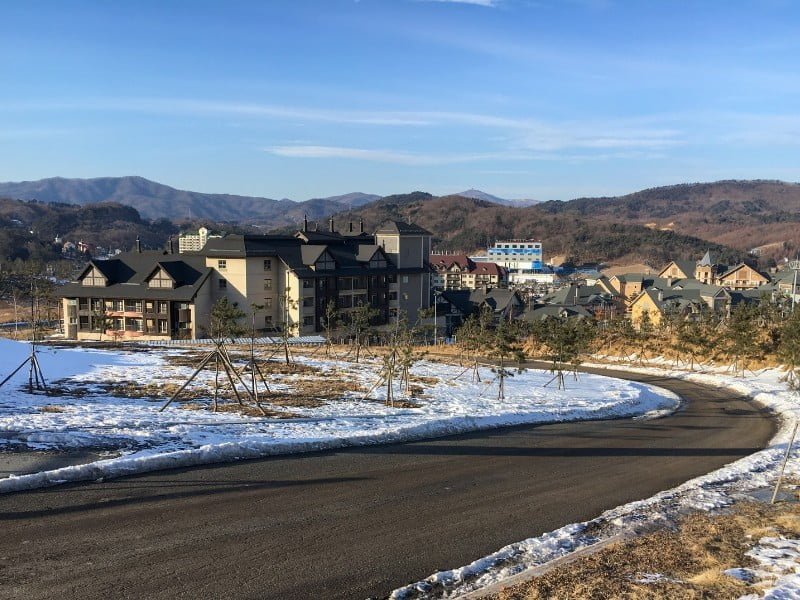
Ode To Pyeongchang
In Pyeongchang’s embrace, A winter wonderland awaits, Skiing down snowy slopes, An adventure that never abates.
The Olympic spirit lives on, In this land of beauty and grace, From Woljeongsa Temple’s serenity, To the thrill of the ski race.
Delicious dishes to savor, Makguksu, dongdongju and more, As the fire crackles in the hearth, A warm welcome at every door.
From sunrise to starry night, Pyeongchang’s beauty never fades, A perfect place for travelers, To discover in every shade.
So come and bask in Pyeongchang’s glory, And let the magic take hold, A land of wonder and adventure, A story that will never grow old.
